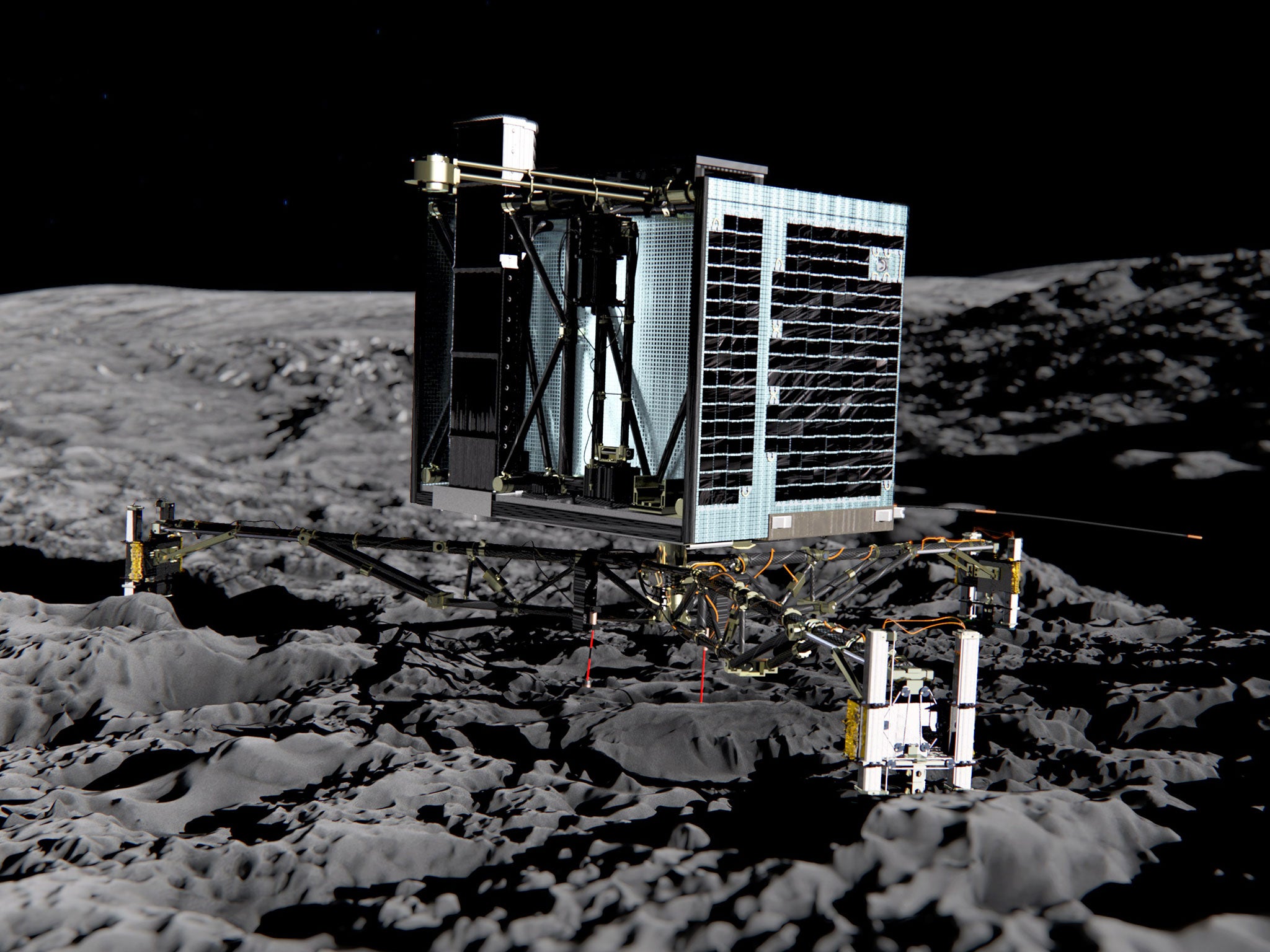Rosetta spacecraft to land probe on comet - and make scientific history
The lander, which is about the size of a washing machine, has legs to cushion its impact, a thruster to push it down, and a harpoon that will act like an anchor

Dutch astrophysicist Dr Fred Jansen is no stranger to the difficulties of space exploration. He led the team that put an X-ray observatory in orbit in the 1990s, and has since overseen exploration operations to Mars and Venus. But the Rosetta mission manager described his latest challenge as the most difficult yet.
On Wednesday, the European Space Agency will try to do the equivalent of transferring an object from one speeding bullet to another. More than 500m km away from Earth, between Jupiter and Mars, a probe named the Philae lander will be ejected from the Rosetta spacecraft and land on a comet for the first time in scientific history.
“The comet and Rosetta are flying through space at 60,000km an hour,” said Dr Jansen, “In many, many aspects this is an absolute first.”
Previous missions to planets like Mars have been far less complex, said Dr Jansen, as ESA has already known about the objects, their densities and their atmospheres.
“With Rosetta this wasn’t the case,” he said, “It’s like the mission impossible because you are trying to achieve something at an object, where you don’t know what the object is like.”
Even the unusual double-lobed shape of comet 67P/Churyumov-Gerasimenko was not discovered until the orbiter returned images earlier this year.
Since its launch in 2004, ESA has used the gravity of Earth and Mars like a slingshot to accelerate the orbiter into the comet’s trajectory. In August, Rosetta became the first spacecraft to orbit a comet – but the mission faces further trials.
“The main difficulty in putting the lander on the comet is that the lander is passive”, said Dr Jansen. Once released, it will drift independently onto a landing ellipse as wide as 500m.
The comet is also continuously pushing Rosetta away, “out-gassing” as it boils off ice as it nears the Sun, says Jansen. “With the disturbances the comet causes in terms of gas and dust, the technical challenges we had to overcome are immense,” he said.
The Philae lander will touchdown at a specially selected site known as Agilika at around 5pm. But even this is not hazard-free said Chris Carr, a principal investigator for the Rosetta orbiter.
“There are boulders, there are cracks and dips and depressions, but we don’t really know what their mechanical properties are like. We don’t know if this is a soft dusty material or whether it’s hard and rocky,” said Mr Carr, a Senior Research Lecturer at Imperial College, London.
To combat this, the lander, which is about the size of a washing machine, has legs to cushion its impact and mechanisms including screws on its feet, a thruster to push it down, and a harpoon that will act like an anchor.
But despite these measures, Professor Ian Wright, a principal investigator for the Rosetta lander, said that certain terrain within Site J could still “absolutely kill the lander”.
Wright, who is Professor of Planetary Sciences at the Open University, is responsible for the Ptolemy instrument, one of eleven devices installed on the lander to analyse the environment.
This, he explained, will drill up samples from beneath the comet’s crust, and heat them to measure their properties. The ESA expect to find both water and organic compounds.
Dr Jansen said that landing on the comet will offer “a unique opportunity to study a deep-frozen version of the solar system as it was four billion years ago”.
“It links measurements we can do today with what was present when earth and life on earth emerged,” he said. The Rosetta orbiter will continue to study the comet for over a year after the Philae’s release.
Video courtesy of The Open University
Subscribe to Independent Premium to bookmark this article
Want to bookmark your favourite articles and stories to read or reference later? Start your Independent Premium subscription today.

Join our commenting forum
Join thought-provoking conversations, follow other Independent readers and see their replies